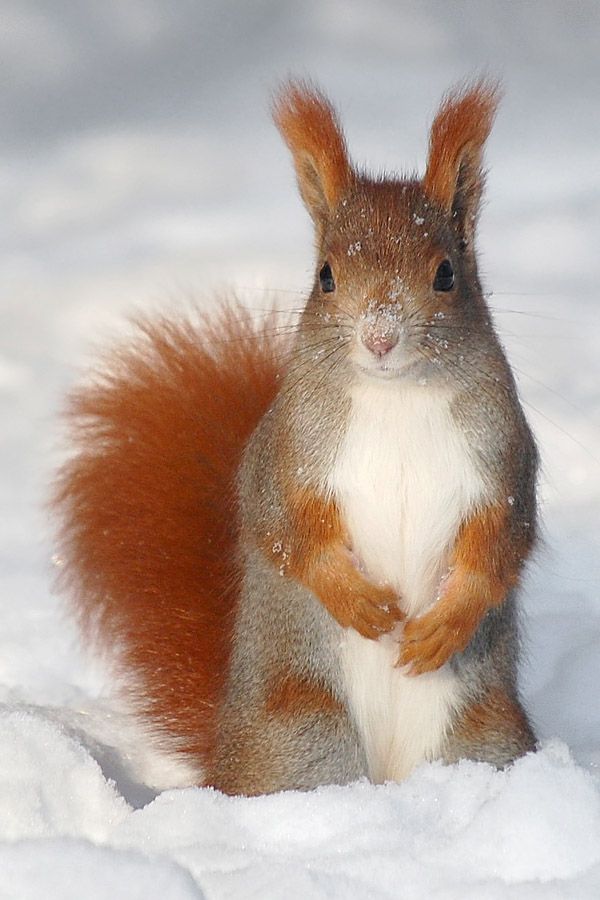
Eurasian Red Squirrel (Sciurus vulgaris)
The (eurasian) red squirrel is a rodent of the genus tree squirrel. The range of the red squirrel extends over all of Europe with the exception of southern Spain, Portugal, and parts of Italy. Furthermore it also is found in the Ural mountains reaching at its eastern limit in Asia Kamchatka, Korea, and Hokkaido, where its preferred habitat is the boreal coniferous forest. In Europe it often has to make do with deciduous and mixed forests. The diurnal (active during the day) red squirrel does not hibernate, rather keeps a winter rest in cold winters. It then stays in its nest most of the time. Being a very skilled climber it lives mainly in trees and intermittently advances very safely and exactly, never minding whether its heading upwards or downward headfirst. Because the red squirrel is very light it can jump over gaps of four to five meters. On the ground too, it does not run, rather it moves forward by jumping, putting its hind-feet in front of the tracks of its front-feet.
If Animals Could Talk
We are delighted to be allowed to publish excerpts from the extraordinary book "If Animals could Talk" on brilliant-creation.org. These excerpts complement our articles "Be Amazed" in an entertaining yet very informative way.
In the preface to it we are told about the reason for the book :
Quotes from the foreword
"Animals have very efficient communication systems, which they use to converse with one another. Nevertheless, they are not able to speak to us in human language. So we have projected ourselves into them, and we have made ourselves their 'mouthpieces'. That’s the reason for the title of the book: 'If Animals Could Talk'. But if animals could tell us about themselves, using our scientific knowledge, if they could tell us about the way they live, the special way they are made and many details about their individual design – what they would say would be unique praise to the Creator.(...)
The book is written in a way that would present each individual animal of a particular species as an imaginary dialogue partner for the reader. Each animal deals with questions that might arise, and answers them in this hypothetical conversation. Through this method, the material is presented in a narrative form – and we hope – in a lively and entertaining way. (...)
While, at a superficial glance, these stories might appear to be fairy tales or fables, such an evaluation would be essentially false. Rather, we are dealing with a special literary genre which deals responsibly with factual matter, but as a stylistic tool, has animals speak for themselves, and thus describe the works of God and praise their Creator. (...)
Out of the great diversity of the animal kingdom, with more than a million different species, we have selected only a very small sample. (...) The facts presented have been scientifically confirmed, even if they are presented in a non-scientific form, due to the narrative style we have chosen. (...)"
Werner Gitt, Karl-Heinz Vanheiden: If Animals Could Talk. 2. Edition, Bielefeld 1998, ISBN 3-89397-760-0.
We are truly grateful to Prof. Dr. Gitt for the generous permission to use these texts!






